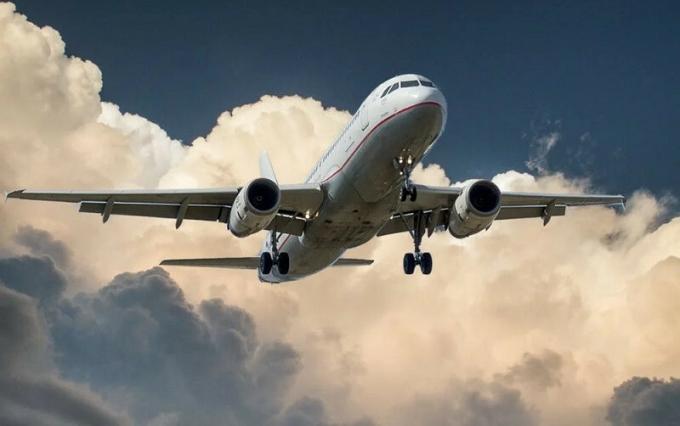How do you deal with the phobia of flying in psychotherapy?
The phobia of flying is one of the most common specific phobias, but fortunately, it responds very well to psychological treatment.
In this article We will see what the working process in psychotherapy with patients with flying phobia consists of in broad terms, taking into account that the treatment is always personalized and varies depending on the needs of each person.
- Related article: "Types of Phobias: Exploring Fear Disorders"
What is the phobia of flying?
The phobia of flying It is a type of specific phobia, a category of psychopathologies that in turn is included in anxiety disorders. Therefore, it will be defined with the same criteria as these psychological disorders and similar treatments adapted to the specific type of phobia will be used.
The characteristic feature or criterion of any specific phobia is disproportionate fear or anxiety that appears before a stimulus, generating great discomfort and the need to avoid it. Thus, the phobia of flying will involve a very intense fear of the situation of flying that will affect the functionality of the patient, that is, it will negatively affect different areas of their life with too much frequency.
- You may be interested in: "Types of Anxiety Disorders and their characteristics"
How are cases of people suffering from this phobia detected?
The diagnosis of specific phobia can only be carried out by mental health professionals; thus, before the work carried out in therapy, there is a phase of recognition of the symptoms and identification of the underlying psychopathology.
The fifth edition of the diagnostic manual of the American Psychological Association (DSM 5) indicates that a series of criteria are met in order to diagnose specific phobia. The first defining criterion indicates that the phobia is related to an intense fear or anxiety for a specific object or situation, such as being inside an airplane; The second criterion that must be met is that the object or the phobic situation almost always causes immediate fear or anxiety, that is, it appears just at the moment the stimulus appears.
Likewise, another criterion that also meets every phobia is that anxiety is disproportionate to the real danger that generates the specific object or situation (in the case of the phobia of flying, the aircraft used today are very safe); the fourth point is the tendency to avoid the phobic object or situation, or the fact that if it is endured it is with great discomfort.
The following criterion highlights that fear, anxiety or avoidance causes discomfort and a dysfunction of the quality of life in important areas of daily life, such as social and work life.
Finally, it is necessary that this pattern of appearance of fear, anxiety and avoidance last a minimum of 6 months.

It is also necessary make a differential diagnosis and verify that anxiety is not better explained by another psychological disorder such as panic disorder, agoraphobia, Obsessive-Compulsive Disorder, post-traumatic stress disorder, separation anxiety or social anxiety, among others.
In this way, knowing the main characteristics that specific phobias must meet, it can be said that the phobia of flying meets the defining criteria of a specific stimulus phobia caused by the experience or expectation of flying in airplanes, helicopters, etc.
Among the types of specific phobia, the one that makes its symptoms emerge when flying in an aircraft is classified within the category of situational phobia; that is to say, anxiety and fear appear in specific situations, being this type of phobia the one that normally appears later in the age group that goes from 13 to 22 years.
- You may be interested in: "The 10 benefits of going to psychological therapy"
What do you do about the phobia of flying in psychotherapy?
In order to treat specific phobias, different treatments of varying efficacy have been used, and Specific and concrete interventions have also been designed to face and manage the symptoms of phobia to fly.
The techniques that have been shown to be most useful and effective for any phobia are behavioral and cognitive; In particular, it will be essential to carry out exercises of exposure to the phobic stimulus to be able to overcome and face the anxiety that it involves.
This implies, among other things, making the person “expose” to the phobic stimulus gradually and going from the easiest to the most difficult, resisting the urge to withdraw and avoid this kind of experiences. To do this, you can work with imagination exercises (after training in the ability to imagine vividly), with virtual reality resources that offer simulations of the interior of an airplane, or using aircraft from truth.
In the same way, components and forms of treatment adapted to the phobia of flying in a specific way will be used. Thus, for the phobia of flying, a type of treatment program has been used that includes the following elements.
1. Psychoeducation
First, a psychoeducation phase is carried out, which aims to inform the patient about the nature of the disorder he has developed, helping him to get rid of preconceptions and erroneous beliefs that could make it difficult for him to improve his quality of life.
The patient is explained what they consist of and how they affect phobias and anxiety, so that he better understands what happens to him, and he is also given information about the aircraft and how they work, referring to their safety and the probability of an accident occurring compared to other means of transport.
- Related article: "Psychoeducation in psychological therapy"
2. Intervention on cognitive processes
Another component used focuses on treating possible cognitive alterations that may occur in the patient, that is, the irrational or untrue beliefs that the subject may present.
To this end, we will use the cognitive restructuring technique, which consists of identifying those irrational or negative beliefs related to airplanes and the act of getting on one that arise in the patient, and that generates great emotional discomfort and frustration.
This process consists of ask questions and present themes to confront and change these damaging ideas, letting the patient himself question her beliefs once he has been presented with certain information or has been made to combine two or more concepts. It is an intervention inspired by the Socratic method.
- You may be interested in: "Cognition: definition, main processes and operation"
3. Relaxation techniques training
Next, we proceed with the teaching of controlled breathing and / or relaxation techniques. This helps the subject to control their breathing by relaxing the abdominal muscles, contracting the diaphragm, and relaxing the intercostal muscles.
Through the conscious control of certain processes linked to the physiological aspect of the individual, Helps you to let the anxiety state fade, since this is associated with a state of nervous and muscular hyper-activation.
- Related article: "6 easy relaxation techniques to combat stress"
4. Exposure exercises
As we have seen, in psychotherapy applied to cases of flying phobia it is necessary for the person to learn to face the fear of it without giving in constantly "to what the body asks" before the appearance of the phobic stimulus, so you must give up avoiding or fleeing from these experiences. To facilitate this process, exposure techniques used in psychotherapy have been developed, which are designed so that the patient does not become frustrated or increase his fear by failing over and over again in trying to overcome anxiety.

Ignacio Garcia Vicente
Ignacio Garcia Vicente
Psychologist specialized in adults
Verified professional
Almeria
Online therapy
View profile
For this, psychologists give a series of indications on how to manage anxiety (related to provisionally accepting a certain level of discomfort without trying to eliminate it by complete and keep it "out of the mind") and with an ascending difficulty curve adapted to the degree to which the person is able to resist the phobic stimulus in each phase of the therapy.
For instance, you can start with an exhibition in imagination, that is, without the real phobic stimulus (We can use both a computer program and virtual reality, or imagination exercises) to then move on to real stimuli.
